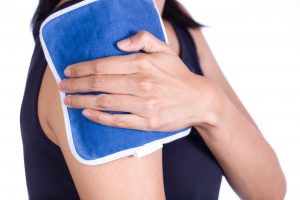What is better for an injury, a hot or cold pack?

This is a dilemma a lot of people have when they first have an injury, and we are often asked in clinic what is better to use for an injury. This could be an acute low back that has just come on suddenly after you bent, a pain in your ankle after running making you limp or lifting awkwardly and feeling a pain in your elbow. What do you do? Ice or heat?
Here is some information that may help with your choice. If in doubt always speak to a practitioner or ring us for some advice we are always here to help.
Ice/cold
Ice is great for acute injuries, calming down superficial tissues that are inflamed hot or swollen. Cold treatment will reduce inflammation by decreasing blood flow into the area (vasoconstriction).
The inflammatory process is a healing, normal, natural, process which can also be incredibly painful. If you have had an injury in the last 48 hours ice can minimise swelling, reduce bleeding within tissues and alleviate muscle spasm and pain. Ice or cold can also numb the tissues and slow down pain messages to the brain.
Ice can also be used to treat more chronic conditions too, such as tendonitis or bursitis.
Tips for icing
- Never place ice directly onto the skin always use a cover.
- Keep moving the ice pack around do not just leave it in one place for too long.
- Ice for 15-20 minutes, this can be done numerous times during the day is appropriate.
- Never ice damaged or broken skin.
Hot/ Heat
Heat can be effective for relieving muscle tension; help relax tissues and help loosen stiff joints. Applying heat to an area will dilate blood vessels (vasodilation) and increase blood flow into the area. Heat can be useful for chronic conditions such as arthritis or muscle pains and spasms. Heat can also be psychologically reassuring which can help reduce pain.
Tips for heat
Heat can be effective for relieving muscle tension; help relax tissues and help loosen stiff joints. Applying heat to an area will dilate blood vessels (vasodilation) and increase blood flow into the area. Heat can be useful for chronic conditions such as arthritis or muscle pains and spasms. Heat can also be psychologically reassuring which can help reduce pain.
- Do not use heat to treat an acute injury.
- Use moderate heat not burning hot!
- Do not use heat if there is swelling of any kind.
- Never heat broken or damaged skin.




